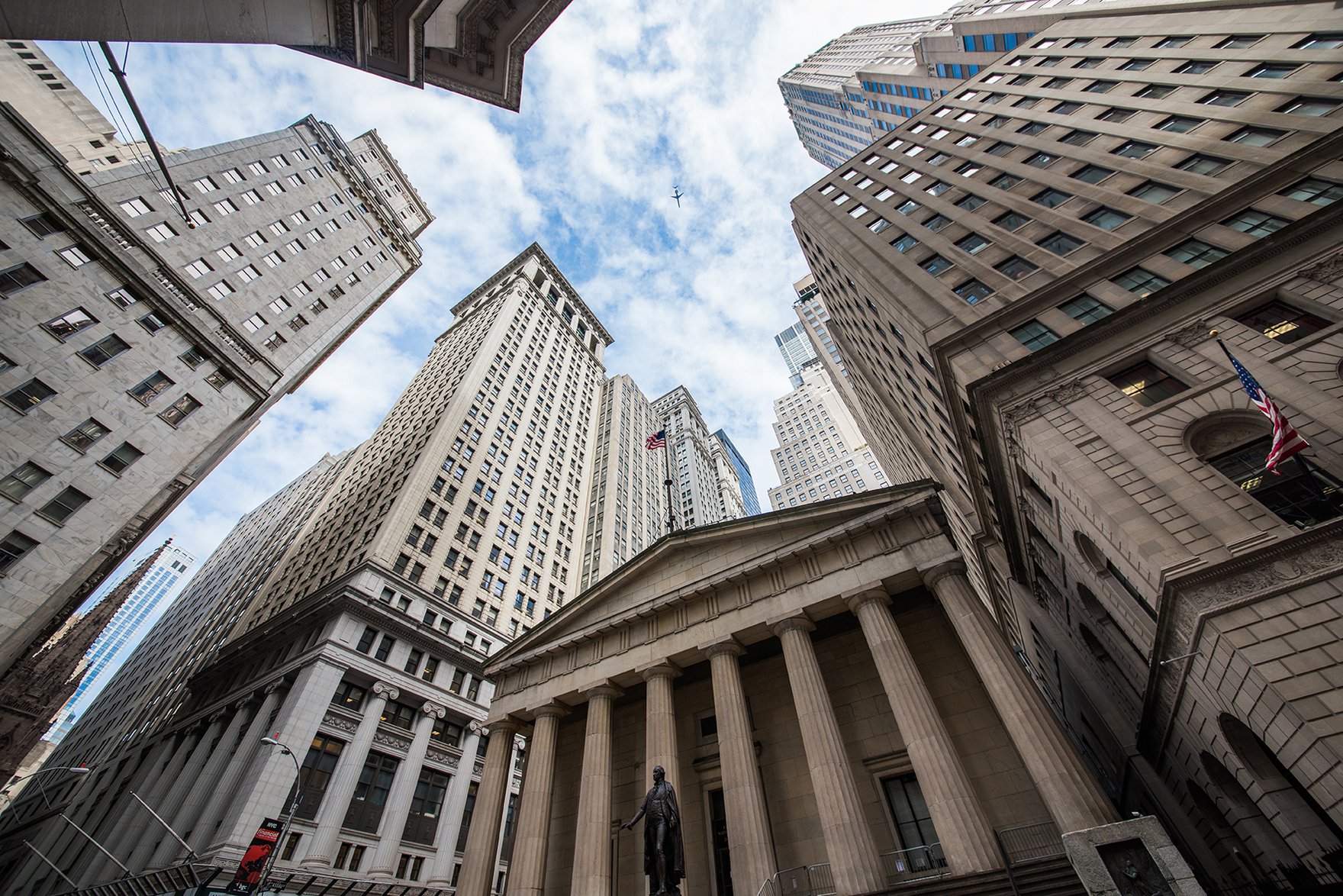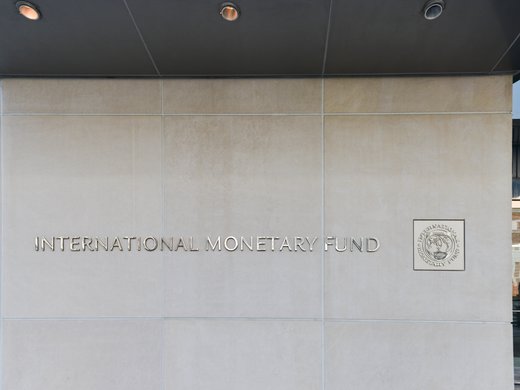In May, US President Donald Trump was asked if he would seek to break up the country’s biggest banks. “I’m looking at that right now,” Trump said in an interview with Bloomberg News. “There’s some people that want to go back to the old system, right? So we’re going to look at that.”
Revisiting the “old system” Trump referenced would involve a restoration of the Glass-Steagall Act of 1933 — a Depression-era law requiring a separation of commercial and investment banks. That statute was essentially eliminated in 1999, although many limitations on bank size were done away with years earlier. At least three Wall Street banks — JPMorgan Chase & Co., Bank of America and Citigroup — would be seriously impacted if the separation were reinstated, because of their large entangled commercial banking and investment banking units.
During the 2016 election, calls to break up the biggest US banks became a rallying cry for supporters of the then Democratic presidential nomination candidate Bernie Sanders. Critics, their arguments bolstered by the 2008 global economic crisis, worry that large financial institutions are “too big to fail” and that their collapse could lead to another massive credit crunch and taxpayer bailouts. A key cause for concern: Many of America’s largest banks have grown significantly in recent years, both through mergers during the crisis and from organic growth — including asset and real estate acquisitions — in the aftermath.
Candidate Trump appeared to back the Glass-Steagall reinstatement effort during the final stages of the election. At Trump’s convention, the Republican platform stated, “We support reinstating the Glass-Steagall Act of 1933 which prohibits commercial banks from engaging in high-risk investment.”
Inclusion of the measure in the platform likely helped draw Sanders supporters to candidate Trump. And early in the Trump administration, both Treasury Secretary Steven Mnuchin and economic adviser Gary Cohn said they were open to reviving some form of the legislation, citing a vague concept called a “twenty-first-century Glass-Steagall,” raising the hopes of some Democrats.
However, prospects for a breakup of big banks — had such an undertaking ever really been under consideration — have dimmed significantly in recent months. Consider that, in a post-election exchange, Sanders, the top Democrat on the Senate Budget Committee, pressed Mnuchin on the matter and came away with this conclusion: “What you’re saying is that the language Trump put into the Republican platform is not really the language that he believed in.”
In response, Mnuchin argued that breaking up the biggest banks would hurt liquidity and the capital markets: “Let me be clear, the president did not put everything into the Republican platform. There was the Republican platform and there was the Trump position, which I was very involved in. The president did not support breaking up the big banks.”
Instead, the Trump administration appears to be heading in the opposite direction, with efforts to loosen bank restrictions implemented in the post-crisis 2010 Dodd-Frank Act. For now, Republican legislative efforts to repeal parts of the statute have stalled on Capitol Hill, as Republican lawmakers focus their energy on approving a massive tax overhaul. Nevertheless, a deregulatory bill, the Financial Choice Act, recently was approved by the House. It seeks to eliminate many Dodd-Frank restrictions in exchange for tougher capital buffers, but so far the package of measures hasn’t received any serious consideration in the Senate.
However, there is another strategy that the Trump administration can and likely will take to roll back Dodd-Frank: loosening restrictions on banks through regulatory means. Earlier this month, the Senate confirmed Randal Quarles, an ex-Treasury official who served in both Bush administrations, to the position of the Federal Reserve’s top bank supervisor. In the position, Quarles is expected to lead the effort to ease many Dodd-Frank restrictions on big banks in a way that does not need legislative action.
A focal point of their efforts is the Volcker Rule, a key Dodd-Frank component that many observers contend was the closest Congress got in its post-crisis statute to breaking up big banks. Based on a concept generated by former Federal Reserve Chairman Paul Volcker, the measure seeks to prohibit “casino gambling” type proprietary investments by bankers on their own behalf. It also requires the largest banks to divest substantial stakes in hedge fund and private equity businesses. However, the rule is considered overly complicated and even the Federal Reserve under Barack Obama’s administration suggested that it needed to be changed, as Wall Street critics complain that it is sometimes impossible to differentiate speculative for-profit trading from trades used to create needed market liquidity.
In August, a top Trump-backed bank regulator published a request for industry feedback on how to make the Volcker Rule less burdensome. That move followed a June 12 Treasury Department report recommending that banks with less than $10 billion in assets be exempted from the Volcker Rule. The report also recommended that regulators could exempt bigger banks from the Volcker Rule if their trading doesn’t exceed a yet-to-be-set threshold of trading assets and liabilities, but little detail is provided as to how regulators would oversee such a change.
At his confirmation hearing, Quarles said he would simplify the package of restrictions. Beyond that, regulators could de-emphasize enforcement of existing rules, which could over time produce the same effect as having the regulations eliminated by lawmakers on Capitol Hill.
The bottom line: Expect that the Trump administration will likely cut back materially on the Volcker Rule, which Wall Street critics argue will reintroduce more systemic risk to the system — especially now that the biggest six banks have become larger and more risky.
“Over the course of the financial crisis and the ensuing period, bank trading and risky activities have become more concentrated in the six ‘too big to fail’ banks,” said Boston University Law Professor Cornelius Hurley in an interview. “The reason it is concentrated there is because the market knows that they are durable counterparties that won’t be allowed to fail. The concentration risk is greater than it was before the financial crisis.”
As far as reinstating some form of Glass-Steagall, don’t expect movement any time soon, even if the White House supported such an action. A key impediment? Congress — in particular, the Senate — where legislation still needs a filibuster-proof 60-plus votes.
“The pure politics of it is they can’t get 60 votes to do anything meaningful on Glass-Steagall,” Hurley said. “But what they can do is use the regulatory apparatus they have to cut back the Volcker rule materially. They are going in the other direction.”
Nevertheless, one realistic Glass Steagall 2.0 idea is being debated around on Capitol Hill and in banking regulatory circles, although it comes with its own problems. In March, Federal Deposit Insurance Corporation Vice Chairman Thomas Hoenig proposed setting up separately capitalized banking and investment bank units under one holding company. To help ensure that the separately capitalized divisions are maintained, the biggest banks would need to set up two corporate boards, one for each partitioned business. So far the White House hasn’t nominated anyone to head the Federal Deposit Insurance Corporation, although some speculate that Hoenig, an independent, could be picked for the role.
The Hoenig concept shares some characteristics with a Bank of England plan under consideration in the United Kingdom, which would “ring fence” or separate a large financial institution’s retail operations from its investment banking division. Based on the measure, each unit would be a separate legal entity with its own board and limits on sharing of capital. The restrictions are based on recommendations issued by an independent committee chaired by former Bank of England Chief Economist John Vickers.
Stateside, it’s unclear whether this solution would work to limit systemic risk, although it clearly would be an improvement on the existing “too big to fail” situation. The key would be to ensure that the separately capitalized divisions remained so in the years to come. Nevertheless, the approach comes with its own problems, not the least of which is that even with separately capitalized divisions, the whole institution would still need to satisfy one set of shareholders.
“As long as you have one common set of shareholders there is always going to be seepage between the units,” Hurley said. “Each of those directors on two boards has a fiduciary duty to the same set of shareholders. You are spending billions of dollars in compliance keeping the two separate and there comes a point where you wonder, ‘What’s the point of having the whole thing under one holding company?’”
Nevertheless, backers of the approach wonder whether the concept will be included in a soon-to-be-issued Treasury report, written in response to a White House executive order on core principles for financial regulation. The Treasury Department has promised four reports on bank regulation — two are out and two more are expected, the next of which should be out shortly. But even if a ring-fencing concept is included, don’t expect to see any serious legislative or regulatory effort to break up big banks any time soon.



